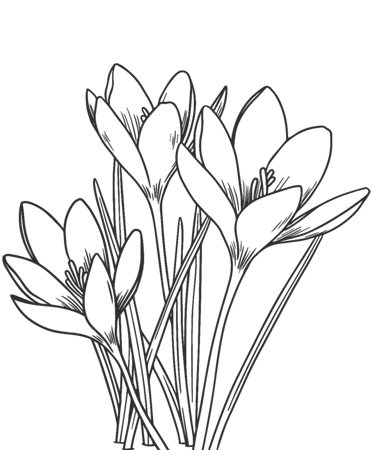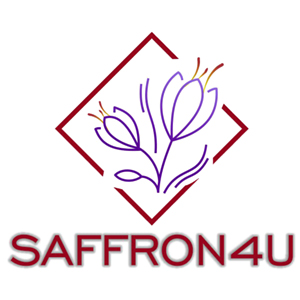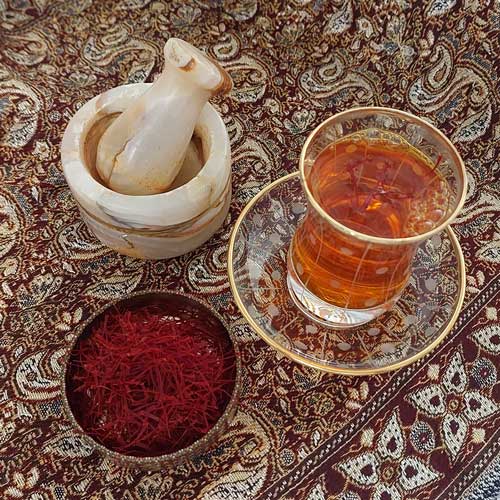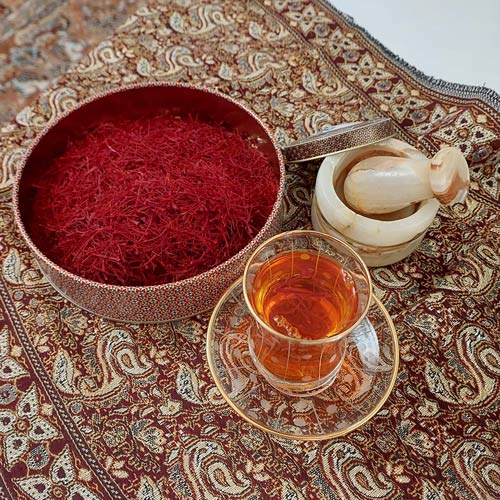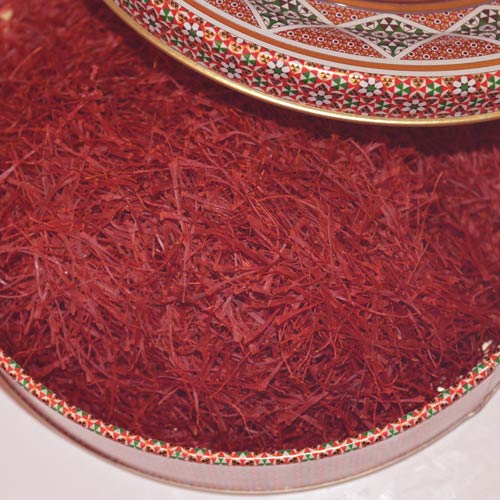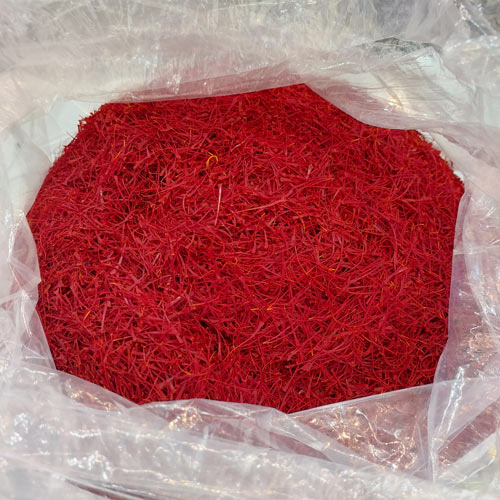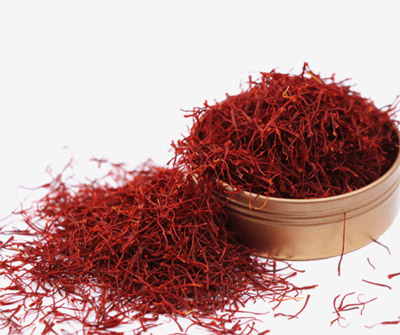Saffron: Spice Your Life!
SHOP
500 gm Pure Premium Persian Saffron
1 k Pure Premium Persian Saffron
Saffron is not typically consumed in large quantities, so it doesn’t provide significant nutritional value in terms of macronutrients like carbohydrates, proteins, or fats. However, it does contain some essential vitamins and minerals in small amounts. Here are some of the nutrients found in saffron:
- Vitamins: Saffron contains small amounts of vitamins such as vitamin A, vitamin C, and various B vitamins, including B1 (thiamin), B2 (riboflavin), and B6 (pyridoxine).
- Minerals: It contains minerals like potassium, calcium, magnesium, and iron in trace amounts.
- Antioxidants: Saffron is rich in antioxidants, primarily crocin, crocetin, and safranal, which contribute to its color, flavor, and potential health benefits.
- Phytonutrients: Saffron also contains various phytonutrients that may have health-promoting properties.
While saffron is not a significant source of nutrients, it is often used sparingly in culinary dishes and traditional remedies primarily for its unique flavor and potential medicinal properties, such as antioxidant and anti-inflammatory effects. It’s important to note that the consumption of saffron is typically in very small quantities due to its high cost and potent flavor.
Saffron has been traditionally used for its therapeutic properties for centuries, and some of its potential health benefits are supported by scientific research. Here are some of the therapeutic properties of saffron:
- Antioxidant Properties: Saffron contains antioxidants like crocin and crocetin, which can help protect cells from oxidative stress and damage caused by free radicals. This may contribute to saffron’s potential anti-aging effects.
- Mood Enhancement: Saffron has been studied for its potential to improve mood and reduce symptoms of mild to moderate depression. Some research suggests that saffron may have antidepressant properties and can help with mood regulation.
- Anti-Inflammatory Effects: Saffron may possess anti-inflammatory properties that can be beneficial in reducing inflammation in the body. This could potentially help manage conditions associated with chronic inflammation.
- Aphrodisiac: Saffron has been traditionally considered an aphrodisiac and is believed to have potential benefits for sexual health. Some studies have explored its effects on libido and sexual function.
- Potential for Eye Health: Saffron has been investigated for its potential to protect eye health. It may help slow the progression of age-related macular degeneration (AMD) and reduce the risk of cataracts due to its antioxidant properties.
- Pain Relief: Saffron has been used for its analgesic (pain-relieving) properties in traditional medicine. It may help alleviate various types of pain, although more research is needed in this area.
It’s important to note that while saffron shows promise in these areas, more research is needed to fully understand its therapeutic benefits and establish recommended dosages. Saffron should not be used as a replacement for medical treatment, and individuals with specific health concerns should consult with a healthcare professional before using saffron supplements or incorporating it into their diet.
Distinguishing real saffron from fake or adulterated saffron can be challenging, as saffron is one of the most expensive spices in the world, making it a target for fraud. Here are some tips to help you identify real saffron:
- Price: Real saffron is costly due to the labor-intensive harvesting process. If the price seems too good to be true, it’s likely not genuine saffron.
- Color: Real saffron threads should have a vivid crimson or deep red color. Be cautious of saffron that looks too bright red or has a uniform color, as this could indicate artificial coloring. If saffron is too pale or yellow, it may be old or of poor quality.
- Aroma: Real saffron has a strong, distinct aroma described as floral, honey-like, or hay-like. If saffron lacks this characteristic fragrance, it may be fake.
- Texture: Genuine saffron threads should have a slightly rough texture and break easily when rubbed between your fingers. Fake saffron may feel smoother and less brittle.
- Water Test: Place a few threads of saffron in warm water. Real saffron will release its color and flavor, turning the water yellow or orange within a few minutes. If the color doesn’t disperse, it might not be genuine saffron.
- Taste: Real saffron has a distinctive, slightly bitter taste with floral notes. Be cautious if the saffron tastes overly sweet or lacks flavor.
- Packaging: Check the packaging and labeling for authenticity. Look for reputable brands and certifications, but also be aware that fraudsters may counterfeit labels.
- Source: Saffron from certain regions, such as Kashmir in India and Iran, is highly regarded for its quality. However, saffron can be grown in other places as well.
- Threads vs. Powder: Whole saffron threads are less likely to be adulterated than saffron powder, as it’s easier to mix other substances into powder.
- Buy from Reputable Sources: Purchase saffron from reputable spice dealers, specialty stores, or online sources with good customer reviews and a history of selling authentic saffron.
Remember that detecting fake saffron can be challenging, and some adulterated saffron can be quite convincing. If you have doubts about the authenticity of saffron, it’s best to buy from trusted sources and established brands to ensure you’re getting genuine saffron.
Saffron is a versatile spice, and it can be used in various culinary dishes and beverages to add its unique flavor, aroma, and color. Here are some common ways to use saffron:
- Infusion: To release the flavor and color of saffron, it’s often infused in warm liquid. Here’s how to do it:
- Take a small pinch (around 10-15 threads) of saffron.
- Crush the saffron threads slightly with a mortar and pestle or your fingers.
- Place the crushed saffron in a small bowl or cup.
- Pour a couple of tablespoons of hot water, broth, or milk (depending on the recipe) over the saffron.
- Allow it to steep for about 15-20 minutes. The liquid will turn into a rich yellow or orange hue.
- Use this saffron-infused liquid in your recipe.
- Rice Dishes: Saffron is commonly used to flavor rice dishes like paella, biryani, and risotto. Add the saffron infusion to the rice while it’s cooking for both flavor and color.
- Soups and Stews: Saffron can enhance the flavor and appearance of soups and stews. Simply add the saffron infusion to your soup or stew while it’s simmering.
- Baking: Saffron can be used in certain baked goods like saffron buns or saffron cakes to impart its unique flavor and color.
- Sauces: You can use saffron in sauces for pasta, seafood, or chicken. Add the saffron infusion to the sauce while it’s cooking to infuse the flavors.
- Desserts: Saffron can be used to flavor desserts like saffron ice cream, saffron custard, or saffron-infused syrups for drizzling over sweets.
- Beverages: Saffron can be used in beverages like saffron-infused tea or saffron-infused milk. Just add a small amount of the saffron infusion to the hot liquid and sweeten as desired.
Remember that saffron is potent, and a little goes a long way. You typically only need a small pinch or a few threads to flavor a dish. Also, store saffron in a cool, dark place in an airtight container to preserve its flavor and aroma.
Persian saffron, also known as Iranian saffron, is widely considered one of the highest quality saffron varieties in the world. It is highly prized for its exceptional flavor, aroma, color, and potency. Here are some key features of Persian saffron:
- Region of Origin: Persian saffron comes from Iran, particularly the regions of Khorasan, which includes areas like Mashhad and Herat. Iran has a long history of saffron cultivation and is one of the largest producers of saffron globally.
- Color: Authentic Persian saffron typically has a deep red color with dark maroon threads. This vibrant color is one of the hallmarks of its quality.
- Flavor and Aroma: Persian saffron is renowned for its strong, complex flavor and aromatic qualities. It often features floral, honey, and earthy notes that contribute to its distinctive taste.
- Potency: Persian saffron is known for being potent, which means you need to use only a small amount to flavor and color a dish. This makes it cost-effective despite its high price
- Grading: Persian saffron is often classified into different grades based on the part of the saffron stigma used (e.g., Sargol, Negin, Pushal) and their quality. The highest grade is typically Sargol, which consists of pure red saffron threads without the yellow styles.
- Cultivation Methods: Persian saffron is cultivated using traditional methods that have been passed down through generations. The saffron crocus (Crocus sativus) is grown in fields and requires careful harvesting and processing.
- Export: Iran exports Persian saffron to various parts of the world, and it is a significant contributor to the country’s economy.
Due to its exceptional quality, Persian saffron is highly sought after and is used in a wide range of culinary dishes, including Persian cuisine, as well as in the production of saffron supplements and herbal remedies. When purchasing Persian saffron, it’s essential to buy from reputable sources to ensure you’re getting genuine and high-quality saffron threads.
Saffron, one of the world’s most expensive spices, is obtained from the stigma of the saffron crocus (Crocus sativus) flower. Each saffron flower has three main parts that are harvested for saffron production:
- Stigma: This is the most valuable part of the saffron flower. It is the thread-like, bright red or orange structure in the center of the flower. Stigmas are carefully plucked by hand, dried, and then used as saffron threads in cooking.
- Style: The style is the slender, pale portion of the saffron thread that connects the stigma to the rest of the flower. It is not as flavorful as the stigma and is typically separated and discarded during saffron processing.
- Petals: The petals are the outermost part of the saffron flower, and they are purple or lilac in color. They are not used in saffron production and are often removed before or after harvesting the stigmas.
The labor-intensive process of hand-harvesting and carefully drying the saffron stigmas is what makes saffron so expensive. It takes a large number of flowers to produce just a small amount of saffron, making it a precious and highly sought-after spice in culinary and medicinal applications.
Saffron is not typically consumed in large quantities, so it doesn’t provide significant nutritional value in terms of macronutrients like carbohydrates, proteins, or fats. However, it does contain some essential vitamins and minerals in small amounts. Here are some of the nutrients found in saffron:
- Vitamins: Saffron contains small amounts of vitamins such as vitamin A, vitamin C, and various B vitamins, including B1 (thiamin), B2 (riboflavin), and B6 (pyridoxine).
- Minerals: It contains minerals like potassium, calcium, magnesium, and iron in trace amounts.
- Antioxidants: Saffron is rich in antioxidants, primarily crocin, crocetin, and safranal, which contribute to its color, flavor, and potential health benefits.
- Phytonutrients: Saffron also contains various phytonutrients that may have health-promoting properties.
While saffron is not a significant source of nutrients, it is often used sparingly in culinary dishes and traditional remedies primarily for its unique flavor and potential medicinal properties, such as antioxidant and anti-inflammatory effects. It’s important to note that the consumption of saffron is typically in very small quantities due to its high cost and potent flavor.
Saffron has been traditionally used for its therapeutic properties for centuries, and some of its potential health benefits are supported by scientific research. Here are some of the therapeutic properties of saffron:
- Antioxidant Properties: Saffron contains antioxidants like crocin and crocetin, which can help protect cells from oxidative stress and damage caused by free radicals. This may contribute to saffron’s potential anti-aging effects.
- Mood Enhancement: Saffron has been studied for its potential to improve mood and reduce symptoms of mild to moderate depression. Some research suggests that saffron may have antidepressant properties and can help with mood regulation.
- Anti-Inflammatory Effects: Saffron may possess anti-inflammatory properties that can be beneficial in reducing inflammation in the body. This could potentially help manage conditions associated with chronic inflammation.
- Aphrodisiac: Saffron has been traditionally considered an aphrodisiac and is believed to have potential benefits for sexual health. Some studies have explored its effects on libido and sexual function.
- Potential for Eye Health: Saffron has been investigated for its potential to protect eye health. It may help slow the progression of age-related macular degeneration (AMD) and reduce the risk of cataracts due to its antioxidant properties.
- Pain Relief: Saffron has been used for its analgesic (pain-relieving) properties in traditional medicine. It may help alleviate various types of pain, although more research is needed in this area.
It’s important to note that while saffron shows promise in these areas, more research is needed to fully understand its therapeutic benefits and establish recommended dosages. Saffron should not be used as a replacement for medical treatment, and individuals with specific health concerns should consult with a healthcare professional before using saffron supplements or incorporating it into their diet.
Distinguishing real saffron from fake or adulterated saffron can be challenging, as saffron is one of the most expensive spices in the world, making it a target for fraud. Here are some tips to help you identify real saffron:
- Price: Real saffron is costly due to the labor-intensive harvesting process. If the price seems too good to be true, it’s likely not genuine saffron.
- Color: Real saffron threads should have a vivid crimson or deep red color. Be cautious of saffron that looks too bright red or has a uniform color, as this could indicate artificial coloring. If saffron is too pale or yellow, it may be old or of poor quality.
- Aroma: Real saffron has a strong, distinct aroma described as floral, honey-like, or hay-like. If saffron lacks this characteristic fragrance, it may be fake.
- Texture: Genuine saffron threads should have a slightly rough texture and break easily when rubbed between your fingers. Fake saffron may feel smoother and less brittle.
- Water Test: Place a few threads of saffron in warm water. Real saffron will release its color and flavor, turning the water yellow or orange within a few minutes. If the color doesn’t disperse, it might not be genuine saffron.
- Taste: Real saffron has a distinctive, slightly bitter taste with floral notes. Be cautious if the saffron tastes overly sweet or lacks flavor.
- Packaging: Check the packaging and labeling for authenticity. Look for reputable brands and certifications, but also be aware that fraudsters may counterfeit labels.
- Source: Saffron from certain regions, such as Kashmir in India and Iran, is highly regarded for its quality. However, saffron can be grown in other places as well.
- Threads vs. Powder: Whole saffron threads are less likely to be adulterated than saffron powder, as it’s easier to mix other substances into powder.
- Buy from Reputable Sources: Purchase saffron from reputable spice dealers, specialty stores, or online sources with good customer reviews and a history of selling authentic saffron.
Remember that detecting fake saffron can be challenging, and some adulterated saffron can be quite convincing. If you have doubts about the authenticity of saffron, it’s best to buy from trusted sources and established brands to ensure you’re getting genuine saffron.
Saffron is a versatile spice, and it can be used in various culinary dishes and beverages to add its unique flavor, aroma, and color. Here are some common ways to use saffron:
- Infusion: To release the flavor and color of saffron, it’s often infused in warm liquid. Here’s how to do it:
- Take a small pinch (around 10-15 threads) of saffron.
- Crush the saffron threads slightly with a mortar and pestle or your fingers.
- Place the crushed saffron in a small bowl or cup.
- Pour a couple of tablespoons of hot water, broth, or milk (depending on the recipe) over the saffron.
- Allow it to steep for about 15-20 minutes. The liquid will turn into a rich yellow or orange hue.
- Use this saffron-infused liquid in your recipe.
- Rice Dishes: Saffron is commonly used to flavor rice dishes like paella, biryani, and risotto. Add the saffron infusion to the rice while it’s cooking for both flavor and color.
- Soups and Stews: Saffron can enhance the flavor and appearance of soups and stews. Simply add the saffron infusion to your soup or stew while it’s simmering.
- Baking: Saffron can be used in certain baked goods like saffron buns or saffron cakes to impart its unique flavor and color.
- Sauces: You can use saffron in sauces for pasta, seafood, or chicken. Add the saffron infusion to the sauce while it’s cooking to infuse the flavors.
- Desserts: Saffron can be used to flavor desserts like saffron ice cream, saffron custard, or saffron-infused syrups for drizzling over sweets.
- Beverages: Saffron can be used in beverages like saffron-infused tea or saffron-infused milk. Just add a small amount of the saffron infusion to the hot liquid and sweeten as desired.
Remember that saffron is potent, and a little goes a long way. You typically only need a small pinch or a few threads to flavor a dish. Also, store saffron in a cool, dark place in an airtight container to preserve its flavor and aroma.
Persian saffron, also known as Iranian saffron, is widely considered one of the highest quality saffron varieties in the world. It is highly prized for its exceptional flavor, aroma, color, and potency. Here are some key features of Persian saffron:
- Region of Origin: Persian saffron comes from Iran, particularly the regions of Khorasan, which includes areas like Mashhad and Herat. Iran has a long history of saffron cultivation and is one of the largest producers of saffron globally.
- Color: Authentic Persian saffron typically has a deep red color with dark maroon threads. This vibrant color is one of the hallmarks of its quality.
- Flavor and Aroma: Persian saffron is renowned for its strong, complex flavor and aromatic qualities. It often features floral, honey, and earthy notes that contribute to its distinctive taste.
- Potency: Persian saffron is known for being potent, which means you need to use only a small amount to flavor and color a dish. This makes it cost-effective despite its high price
- Grading: Persian saffron is often classified into different grades based on the part of the saffron stigma used (e.g., Sargol, Negin, Pushal) and their quality. The highest grade is typically Sargol, which consists of pure red saffron threads without the yellow styles.
- Cultivation Methods: Persian saffron is cultivated using traditional methods that have been passed down through generations. The saffron crocus (Crocus sativus) is grown in fields and requires careful harvesting and processing.
- Export: Iran exports Persian saffron to various parts of the world, and it is a significant contributor to the country’s economy.
Due to its exceptional quality, Persian saffron is highly sought after and is used in a wide range of culinary dishes, including Persian cuisine, as well as in the production of saffron supplements and herbal remedies. When purchasing Persian saffron, it’s essential to buy from reputable sources to ensure you’re getting genuine and high-quality saffron threads.
Saffron, one of the world’s most expensive spices, is obtained from the stigma of the saffron crocus (Crocus sativus) flower. Each saffron flower has three main parts that are harvested for saffron production:
- Stigma: This is the most valuable part of the saffron flower. It is the thread-like, bright red or orange structure in the center of the flower. Stigmas are carefully plucked by hand, dried, and then used as saffron threads in cooking.
- Style: The style is the slender, pale portion of the saffron thread that connects the stigma to the rest of the flower. It is not as flavorful as the stigma and is typically separated and discarded during saffron processing.
- Petals: The petals are the outermost part of the saffron flower, and they are purple or lilac in color. They are not used in saffron production and are often removed before or after harvesting the stigmas.
The labor-intensive process of hand-harvesting and carefully drying the saffron stigmas is what makes saffron so expensive. It takes a large number of flowers to produce just a small amount of saffron, making it a precious and highly sought-after spice in culinary and medicinal applications.
Saffron
Spice Your Life
Saffron is a spice derived from the flower of Crocus sativus, commonly known as the saffron crocus. It is highly prized for its distinctive flavor, aroma, and vibrant red-orange color. Saffron is often used in cooking to add a unique and subtle taste to dishes, especially in Mediterranean and Middle Eastern cuisines. It is also one of the most expensive spices in the world due to the labor-intensive process of harvesting the delicate saffron threads from the flower's stigmas. Saffron is used in various culinary dishes, including paella, risotto, and certain desserts. Additionally, it has been used in traditional medicine for its potential health benefits.
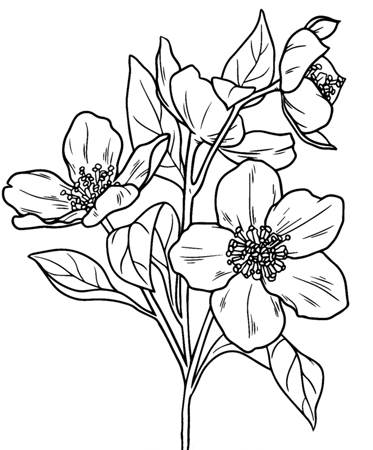
About us
Welcome to Saffron4u.com!
At Saffron4u, we are passionate about bringing you the finest saffron from around the world. Our journey began with a love for this exquisite spice, and we have dedicated ourselves to sourcing and delivering saffron of the highest quality to your kitchen.
Explore our collection of saffron products and discover how this remarkable spice can enhance your culinary adventures. Whether you’re a professional chef or a home cook, we invite you to embark on a saffron journey with us.
Thank you for choosing Saffron4u. We look forward to serving you and sharing the magic of saffron with the world.
